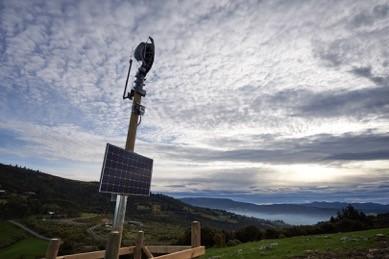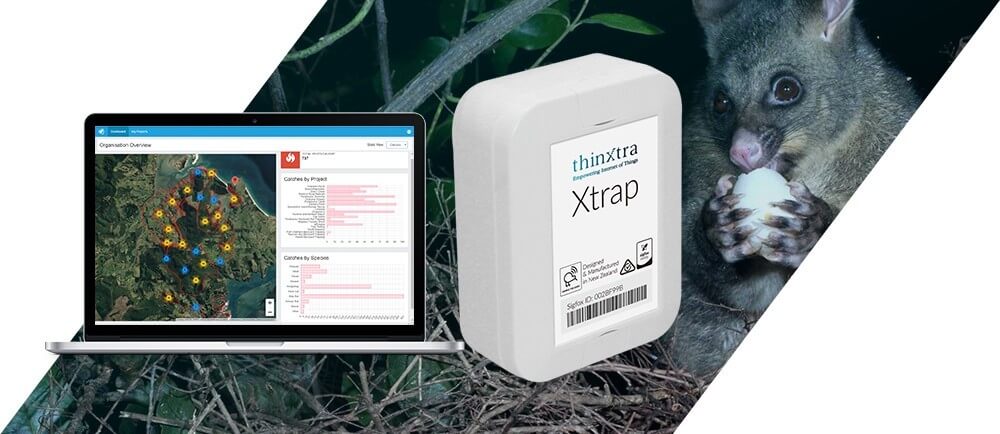
For that purpose, Thinxtra has developped a solution, designed and manufactured in New Zealand, to efficiently monitor those predators.
The solution is made of:
- The Sigfox network coverage, which is already covering over 30 % of the New Zealand land and will be further deployed in those specific areas of interest such as in the case above for Dunedin region.
For this specific project, with areas to be covered by the eradication programme in remote areas, with no existing network infrastructure, Thinxtra designed and helped install, with the support from Fulton Hogan company, an autonomous solar and wind powered Sigfox-on-a-Pole (SoaP) wireless gateway to provide full coverage (up to 40km away) in the Halo region of Orokonui Ecosanctuary (Dunedin, South Island of New Zealand) as part of the Halo Project.
The Xtrap, a high RF performance wireless motion detector device with long battery life of 10+ years. The Xtrap has been specifically designed and built to easily retrofit to any approved Department of Conservation (DoC) trap. It is optimised to work in very remote locations over long distances, including forestry areas, covered by the Sigfox network.
- A smart IoT cloud platform and App (for volunteers) with many insights: which areas are trapping the most pests, total number of pests which have been caught in which trap, which type of pest caught in each trap, total number of pests caught per zones and per species, as well as alerts triggered when a trap is activated, saving up to 70% in paid or volunteer time.
Now, that Halo region of Orokonui Ecosanctuary is ready to eradicate those pests, let’s replicate that project and save those kiwis.
About Predator Free NZ 2050
New Zealand Department of Conservation has adopted the “ambitious goal” of eradicating its soil of weasels, pests and feral threats (rats, possums, stoats and all other invasive mammals) by 2050 under the name: Predator Free New Zealand 2050 . It is an aspiring programme to protect New Zealand of the most damaging introduced predators that threaten its natural taonga, its economy and primary sector.
Predator Free 2050’s objectives are to:
- remove the major threats to native wildlife
- enhance economic return from agriculture and forestry and reduce risk of disease
- create new opportunities for regional development
- reinforce New Zealand’s trade and tourism brand
- provide a legacy for future generations
About Thinxtra
Thinxtra is empowering the Internet of Things by operating the first nationwide LPWA networks in Australia, New Zealand and Hong Kong (based on Sigfox connectivity technology) as well as enabling and promoting a full eco-system of partners that provide IoT solutions and services to increase efficiencies, accelerate decision making, improve quality of service and quality of life (to humans and animals), and find more economical solutions to common problems.
 The Xtrap, a high RF performance wireless motion detector device with long battery life of 10+ years. The Xtrap has been specifically designed and built to easily retrofit to any approved Department of Conservation (DoC) trap. It is optimised to work in very remote locations over long distances, including forestry areas, covered by the Sigfox network.
The Xtrap, a high RF performance wireless motion detector device with long battery life of 10+ years. The Xtrap has been specifically designed and built to easily retrofit to any approved Department of Conservation (DoC) trap. It is optimised to work in very remote locations over long distances, including forestry areas, covered by the Sigfox network.

